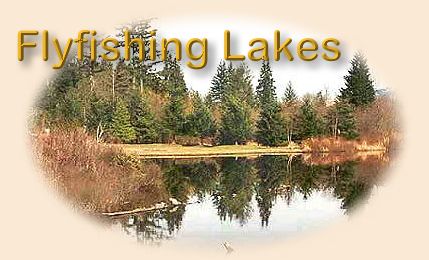|
Chironomid larvae and pupal patterns are simple.
As a rule the smaller the pattern the simpler it
becomes. For practical purposes most anglers I
know stop at a size 16 when imitating the larvae
and pupae. However, some tie below those sizes and
are successful. Further south, smaller Chironomids
become more important. Not all lakes ice over and
as a result there are more generations of Chironomids,
resulting in smaller sizes. In British Columbia anglers
are fortunate as there are many lakes with some huge
Chironomids. I have seen anglers use patterns #6 3XL
just to make them stand out in the crowd. No matter
what the size, it is important to keep the pattern
slender. Obese Chironomid larvae and pupae patterns do
not work as well. For hooks I use the Tiemco 2457 for
the majority of my pupae patterns. The 2457 is a heavy
wire hook with a large gape that hooks extremely well.
Fish take patterns on this hook confidently owing to
its natural look. Other favorites include the Tiemco
3761 and 5262. I use the 5262 for my larvae patterns.
For body materials it is tough to beat the bright
look of Frostbite, Flashabou or Krystal Flash. These
materials do a superb job of imitating the natural
glow of the larvae and pupae. People often ask me
which material I prefer and my answer is that the
deciding factor is always color. Not all of these
materials are available in the same color so don't
rely on just one material. Other popular materials
are the vinyl body materials such as V-Rib or Larva
Lace. Some of these materials are hollow and some
are not. I prefer to use V-Rib for pupae or larvae
patterns size 14 and larger. Many interesting effects
are possible by wrapping these materials over other
materials such as Flashabou or Krystal Flash. Another
excellent material is Super Floss, a stretchy Lycra-based
translucent material ideal for both larvae and pupae
patterns. By using different colored threads or
underbodies many dynamic combinations are possible.
Split lengthwise using a dubbing needle Super Floss
makes a great divided tail for larval patterns.
Larvae and pupae have segmented bodies. To imitate
segmentation use fine copper, silver or gold wire.
The wire adds weight and helps simulate the trapped
air and gases. As a personal preference, I use copper
or gold wire on my patterns that I fish deeper. This
includes my larval patterns. For shallower water, and
patterns fished in the top of the water column, I
lean towards a silver wrap. Fine Mylar tinsels also
make for flashy ribs. British Columbia fly-fishing
pioneer and author Jack Shaw wrote in his book
Tying Flies for Trophy Trout, "On bright days
use silver ribbing; dull days spring and fall, use
gold ribbing." It is a philosophy I believe in and
use as a guide.
I weight most of my pupal patterns, as I prefer to
fish the pupa on or near the bottom. I weight the
thorax with either non-toxic lead wire or metal
beads. My favorites are metal or tungsten beads.
They are easy to use and come in a wide range of
sizes and color. Again the combinations are endless.
Keep in mind that a slender pattern sinks faster
than a bulky overdressed pattern.
The prominent white gills of the pupa are important
to imitate. There are many materials available for
the fly tier. I My favorite is white sparkle yarn
but other popular materials include polypropylene,
Z-lon, and white ostrich herl. Silver or pearlescent
glass beads also work well.
For my adult or emerger patterns buoyancy is critical.
Use light wire hooks such as the Tiemco 2487 and the
Tiemco 100. For adult patterns employ the same
materials that dry-fly tiers use. For emerger patterns
I strive to get that half in half out of the water look.
This is not easy. You need to use a combination of
innovative techniques and material application. For
some of my patterns that float in the surface I use
bright materials as a sight post to help me see the
pattern. Two of the best I have i found are Dan
Bailey's Hi-Vis and Umpqua's McFlylon. The bright
orange stands out even at a distance. ~ PR
More from Phil Rowley's excellent book,
Fly Patterns for Stillwaters next time.
Credits: Excerpt from Fly Patterns
for Stillwaters By Philip Rowley, published
by Frank Amato Publications. We appreciate use
permission.
|

